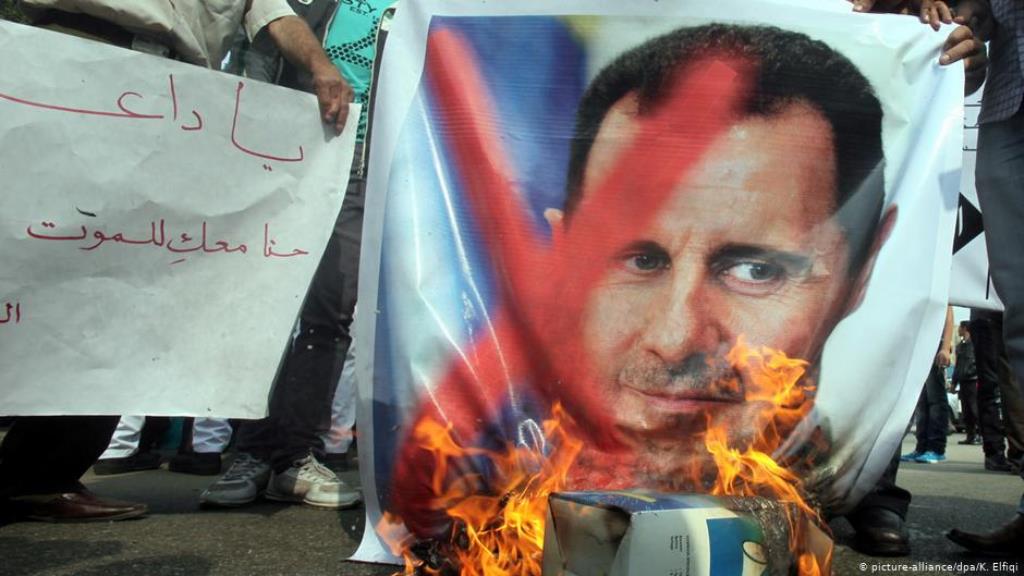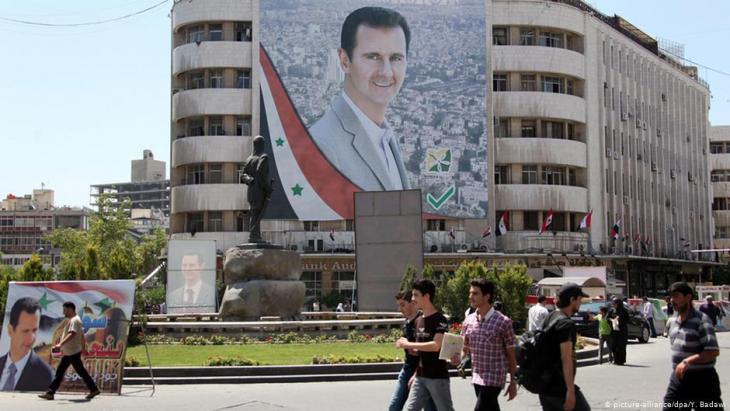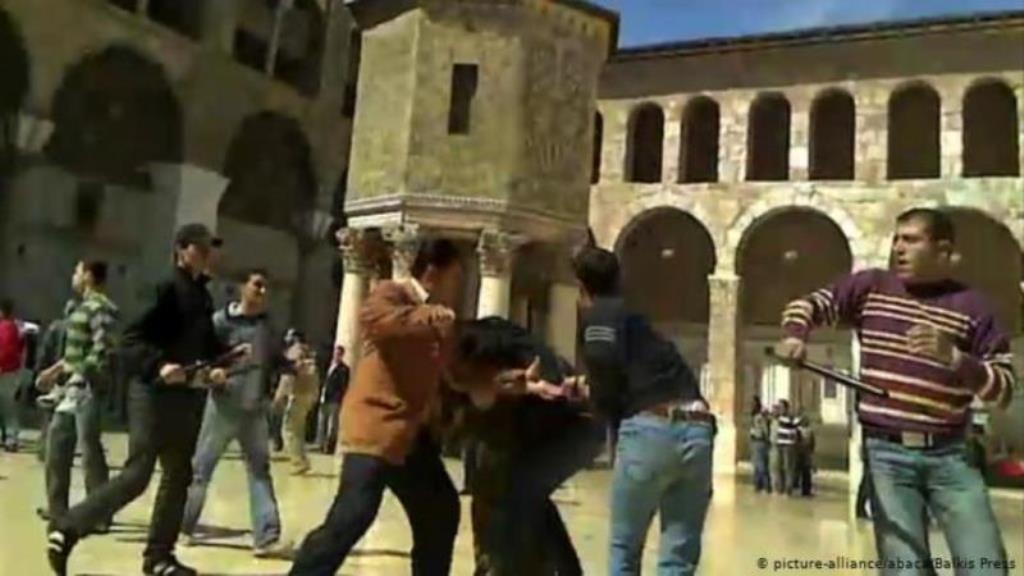About Syria, which is no more

The day after Hafez al-Assadʹs death, his son Bashar was installed in power. It is well known that he was never intended for this challenge. His brother, Basil, was the fatherʹs preferred heir. But fate conspired to create a car accident, and Bashar found himself, whether he liked it or not, the much-needed heir for the succession.
It is fair to say that most Syrians were very happy at this turn of events, at the time. Bashar was a shy, polite ophthalmologist. He was seen as more merciful than his late father or his exiled uncle (Rifaat), and people turned a blind eye to the outrageous method of his inauguration (which was revealed when the "Peopleʹs Assembly" met, in a brief session, to amend the constitution, so that the age of eligibility to become president accorded with the age of the heir apparent). Syrians were well aware of the nature of the regime which governed them: "the lion is dead, long live the cub." (ed: a play on the Arabic word for ʹlionʹ – ʹasadʹ).
If things had turned out well, history might have put up with such major falsification. There was optimism within Syria that the country was on the path to reform and opening up.
Arab despots mistrustful
The young Assad emerged as a brilliant star at the Arab Summits. His rhetoric was youthful, lively and anti-Western, and he offered strategic analyses which sounded smarter than they were about the challenges facing the "Arab nation". He did so with an over-philosophical air: "because the challenges determine what the solutions should be". Or so he said.
Most of his fellow rulers and ageing tyrants listened uncomfortably to him, wondering how long this "young mutt" was going to annoy them by talking about "tragedies which multiply, reduce and continue, with a diagram in which the peak indicates the height of Arab misfortune and the trough reflects the real decline in the Arab world..."

When the Damascus Spring movement surfaced in 2000, the young heir responded by relaxing some rules and by raising very slightly the ceiling on free speech and thought. He even allowed the formation of civic groups and showed them how they could criticise the government and the party –without going near the young president, of course.
The Damascus Spring – hopes for reform
Within just a few years, the Damascus Spring movement began to demand the right to political participation and – all too quickly – Basharʹs promises vanished into thin air. He was, after all, his fatherʹs son, incapable of escaping the path that had been laid out for him, even had he wanted to. Maintaining the authoritarian system inherited from his father was of vital benefit to the Assad family and the ruling Alawite elite.
Whether it benefitted Syria was neither here nor there. Thus, the ruling family intervened in a high-handed manner, as Hafez al-Assad might have done. The Damascus Spring was suppressed by the security services, at the behest of the first family, and all intellectual, cultural and political activity was frozen.
The Damascus Spring presented an opportunity for reformist elements within the leadership to take a peaceful and gradual path towards democratic change in Syria, coordinating between the regime and the people. This might arguably have prevented the country from lurching further into the crisis which had been building for decades.Rather than being aimed at undermining Bashar al-Assadʹs authority, the Damascus Spring was ready to coalesce around him and to support him through the reform process towards a peaceful and gradual democratic transition. Bashar even told a U.S. media delegation that the day would come when he would give up his post through the ballot box.
But all of the above was no more than the customary lies of a Middle Eastern despot. In fact, Bashar was only a "presidential facade" used to extend his fatherʹs rule based on the family and on the Alawite sect. For decades, it had dominated the army, the one and only political party (the Baʹath), the intelligence services, the media and the economic resources of the country.
The aim of the authoritarian regime and its supporters was to seize power indefinitely. For this they ruled with an iron fist to make it unmistakably clear to the population that they could never free themselves from the stranglehold of the ruling clan.
Like father, like son
The glorified slogans of the Baʹath party calling for Arab unity, socialism and the liberation of Palestine, were nothing more than propaganda, devoid of good intentions. Basharʹs rhetoric was simply so much hot air.
When the people finally and inevitably rose up, as the domino effect of what became known as the Arab Spring spread, the popular Syrian uprising erupted – and it was peaceful! Following in his fatherʹs footsteps, Bashar responded by applying the Hama principle – a reference to the devastating military assault which Hafez al-Assad launched on 2 February 1982 against the city of Hama in order to put down an armed uprising against the regime.

The revolt was affiliated with the Muslim Brotherhood (who were Sunni), whilst the regime was affiliated with the Alawites (who were Shia). According to the Hama principle, complete destruction by air and artillery was not only targeted at the few rebel clusters in confined areas, but was deliberately extended to include large populous areas, resulting in the death of thousands of innocent civilians. The message: Assad shows no mercy to those who rise up against him.
Over the course of the Syrian uprising of 2011, Assad the son (along with the ruling Alawite family) employed the same tactics, perceiving Deraa to be another isolated insurgent town like Hama. They were taken aback when other towns and villages rose up in support. Accordingly, the sectarian family system put into action the only solution it knew, namely violence and more violence.
A second Grozny
When Bashar realised that the regime was about to collapse, he appealed to Iran, its Supreme Leader, and to their associate, the Lebanese Hezbollah. Their intervention, alongside Assadʹs army, turned the tide, albeit only slightly, against armed opposition from the Free Syrian Army, the moderate Islamists, not to mention many more al-Qaida and IS operatives.
Only the intervention of the Russian army prevented the opposition from entering Damascus, as the Russian Foreign Minister Lavrov explained on 17 January 2016: "We knew our decision was the right one, when we responded to the request of the legitimate government of Syria, which is a UN member state, knowing as we did that the capital Damascus was only 2 to 3 weeks away from falling into terrorist hands."
With the intervention of Putinʹs Russia, the Grozny approach came into operation. This went far beyond the Hama principle. Remembering that the entire Chechen city of Grozny was wiped out in a few months and turned into a burnt-out wasteland, the similarities are obvious. Most inhabitants fled the inferno, whilst those who were unable to flee died under the rubble, along with the last of the fighters.
After eight years of war, the death of hundreds of thousands, the displacement of millions and the destruction of most cities, towns and villages, one question remains: what is left of the Syria we once knew and will it be ruled by a bold lion or a conniving fox?!
All the negotiations currently underway or which may take place in the coming days and years, are a perversion of the truth and of reality, because the fact is that Syria is no more – so how can we possibly negotiate her future!
Faraj Alasha
© Qantara.de 2019
Translated from the Arabic by Chris Somes-Charlton
Faraj al-Asha is a well-known Libyan political writer and analyst. His new novel, Synesius and Hypatia, was recently published by Dar al-Tanweer.